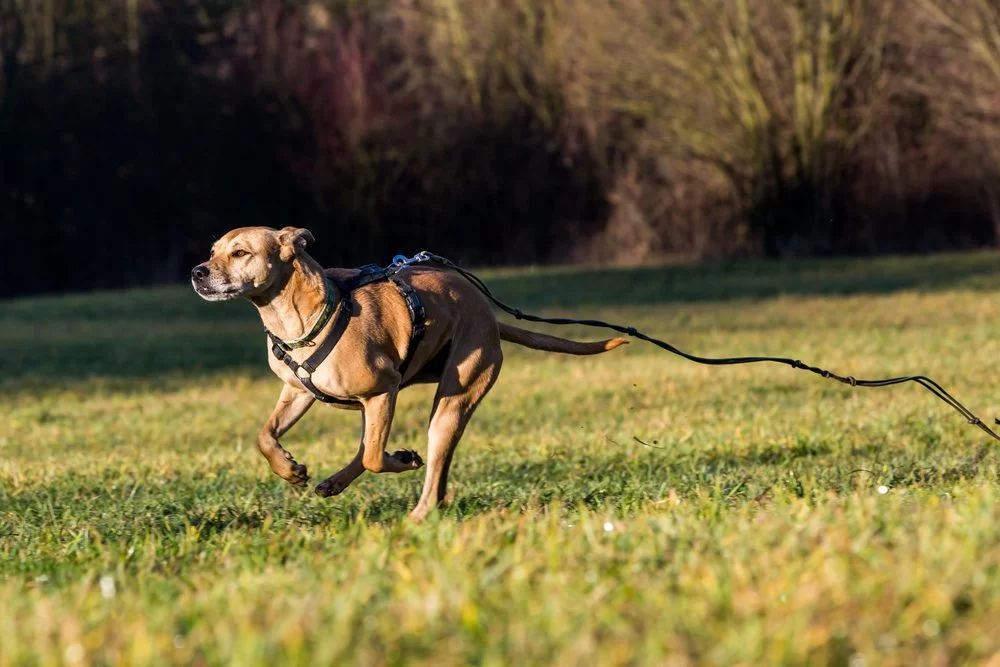How to Train a Dog to Stop Running Away: Effective Dog Training Tips
If you're like me, you've probably faced that nerve-wracking moment when your dog bolts out the door or takes off running in the park. The panic of chasing after your dog, hoping they’ll come back, is all too real. As much as I love my dog, I quickly realized that I needed a plan to stop them from running away. Fortunately, with the right training techniques, patience, and consistency, you can prevent this behavior and keep your dog safe. Let me share my journey and some effective methods that worked for me to train my dog to stop running away.
1. Understanding the Root Cause of the Behavior
Before diving into the training, it's important to understand why your dog might be running away in the first place. In my case, my dog loved exploring and was incredibly curious. He would often dart out the door whenever it was open, especially if he saw something interesting outside. For other dogs, running away might stem from anxiety, a lack of boundaries, or even the desire to chase after something they find exciting, like a squirrel or another dog.
Recognizing the reason behind your dog's behavior is the first step. Whether it's a lack of training, separation anxiety, or simply an adventurous spirit, knowing the cause can help guide you in the right direction when training your dog.

1946 S Christopher Columbus Blvd, Philadelphia, PA 19148, USA
See Details2. Start with Basic Obedience Training
Before tackling the issue of your dog running away, it’s essential to establish a solid foundation of obedience. I began with the basics: sit, stay, and come. These commands are not only the cornerstone of good behavior but also essential in controlling your dog's movements, especially when outside.
When I first started teaching the "come" command, it wasn't easy. My dog was stubborn and easily distracted, so I used treats and lots of positive reinforcement. Whenever he came to me when called, I made sure to reward him generously. Over time, he started associating the command with something positive, which made him more willing to listen when I needed him to come back, even if there was something exciting going on nearby.
3. Leash Training to Control Escapes
Leash training was a game-changer in our journey. It gave me control over my dog’s movements, especially in situations where he might get too excited or distracted. I began by teaching my dog to walk calmly on a leash. This involved a lot of patience and consistency. When we were outside, I made sure to keep him on a short leash, so he couldn’t dart off at the first sign of something interesting.
One of the most effective techniques I found was using the “stop and go” method. When my dog would pull ahead, I would stop and wait until he looked back at me or relaxed. Only then would I continue walking. This taught him that pulling and running away would not get him anywhere, and walking calmly by my side was the best way to move forward.
4. Create a Secure Environment
Sometimes, preventing your dog from running away starts with making sure your home or yard is a safe and secure environment. I realized that my dog had an easier time running off when there were gaps in our fence or when the gate wasn’t securely closed. We invested in a taller, more secure fence, and I made sure that the gate was always locked. I also installed a few barriers near the door to make it harder for him to dart outside unnoticed.
Additionally, I started supervising him more closely when we were outside. If I wasn’t able to keep an eye on him at all times, I’d put him on a long leash or tie-out to ensure he couldn’t escape. This gave me peace of mind, especially when we were in areas where I couldn’t immediately intervene if he tried to run off.
5. Use Positive Reinforcement for Good Behavior
Positive reinforcement is one of the most effective tools in dog training. Every time my dog stayed close to me, returned when called, or didn’t run off, I made sure to reward him with treats, praise, or playtime. This reinforcement helped him understand that staying close was beneficial, and running away didn’t offer him the same rewards. I also made sure to praise him when he walked calmly next to me on a leash, reinforcing the idea that good behavior always gets rewarded.
6. Desensitize Your Dog to Triggers
In my experience, many dogs run away when something catches their attention, like a squirrel or another dog. To address this, I worked on desensitizing my dog to common triggers. I would take him to places where he could encounter these distractions, like a park or a nature trail, and practice commands like “sit” or “stay.” The goal was to teach him to ignore distractions and focus on me, even when there were exciting things happening around us.
Each time he successfully ignored a distraction and listened to my commands, I rewarded him with praise or treats. This consistent training helped him develop better self-control and made it less likely for him to run off when he saw something tempting.
7. Gradual Increase of Freedom
As my dog became more reliable in his training, I began to increase his freedom slowly. I’d let him roam in the yard or park, but always under supervision. If he tried to run away, I would immediately call him back and reward him when he returned. Over time, he started to understand that running away was not worth it, and being close to me brought him positive experiences.
It's important to note that this process takes time. There will likely be setbacks along the way, but consistency is key. I made sure to keep training sessions short, fun, and positive to prevent frustration for both of us. The more consistent I was, the more my dog learned to stay close to me, even when there were distractions.
8. Seek Professional Help if Needed
If you’re struggling to train your dog or the running away behavior is particularly persistent, it might be worth seeking professional help. A professional dog trainer can offer tailored advice and more advanced techniques to address your dog’s specific needs. I reached out to a trainer when I hit a plateau in our training, and it made a huge difference. Sometimes, a fresh perspective can help break through training roadblocks.
Training a dog to stop running away isn’t an overnight process, but with patience, consistency, and the right approach, it’s absolutely achievable. Over time, I noticed that my dog became more obedient and less likely to dart off without warning. Now, our walks are more enjoyable, and I can trust him to stay close. If you’re facing the same challenge, know that with time and effort, your dog can learn to stop running away and become the well-behaved companion you’ve always wanted.











